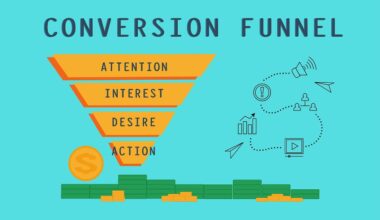The Role of Cost Management in Business Profitability
Cost management is crucial for enhancing business profitability. It entails assessing and controlling costs efficiently to achieve desired profit levels. By empowering businesses to analyze their expenses accurately, effective cost management drives decision-making. Companies can identify trends in spending and uncover areas where savings are possible. This continuous monitoring ensures optimal allocation of resources, reducing waste and enhancing operational efficiency. Furthermore, organizations can adopt various strategies to refine their cost management approaches. These may involve employing budgeting techniques, using forecasting models, and leveraging technology. Additionally, firms can implement performance metrics to track progress toward cost reduction targets. Over time, these practices foster a culture of accountability, where every department takes ownership of its financial performance. As businesses strive to remain competitive, investing in cost management becomes essential. It not only enhances profitability, but it also promotes sustainability and growth. By prioritizing cost analysis, companies can make informed choices that align with their long-term objectives. Ultimately, effective cost management can enable organizations to thrive in dynamic market conditions and achieve their financial goals with confidence.
Understanding the key components of cost management plays a vital role in maximizing profitability. These components include cost identification, estimation, budgeting, and control. Analyzing each of these elements allows businesses to gain insights into their cost structures. Cost identification involves recognizing various expenses related to production and operations, enabling accurate tracking. Proper estimation is critical for forecasting future costs and budgeting accordingly. It ensures that resources are allocated efficiently while meeting operational demands. Subsequently, budgeting helps organizations set financial goals and monitor actual spending against these objectives. This process creates a framework for financial planning and performance evaluation. When companies effectively manage these components, they are better positioned to reduce unnecessary expenditures. Moreover, having a robust control mechanism allows for timely intervention when costs exceed expectations. Engaging all stakeholders in cost management creates a shared sense of purpose. Employees can contribute ideas for improvement that lead to better resource utilization. In terms of communication, maintaining transparency about cost management initiatives can strengthen trust among teams. All these factors combined lead to enhanced performance and profitability all while aligning with strategic business goals.
Strategic cost management is integral to achieving long-term profitability. This approach extends beyond standard budgeting, aligning costs with the organization’s competitive advantage. By evaluating the value chain, businesses can discern which activities drive value and which ones do not. As a result, they can prioritize investments in high-value processes while streamlining or eliminating less effective ones. Understanding the link between costs and competitive strategies fosters an environment of continuous improvement. Achieving a competitive edge requires ongoing reevaluation of cost structures that align with market demands. Companies often utilize activity-based costing (ABC) as a tool for strategic cost management. ABC helps in tracking overhead costs more accurately by assigning them to specific activities. This precision in categorization allows organizations to identify and analyze key cost drivers effectively. Furthermore, it promotes better pricing strategies based on comprehensive insights into product profitability. Investing in employee training around strategic cost management methodologies equips staff with skills to identify opportunities for efficiency. As businesses continue to adapt, the role of strategic cost management will grow increasingly significant in sustaining profitability within evolving industries.
Analyzing Cost Behavior
Understanding cost behavior is pivotal in managing expenses effectively. Costs can be categorized as fixed, variable, or semi-variable, impacting how businesses model their profitability. Fixed costs, such as rent or salaries, remain unchanged regardless of production levels, making them relatively easy to forecast. These costs require careful management to avoid exceeding budget limits. Conversely, variable costs fluctuate with production levels, requiring more nuanced forecasting and analysis. Businesses must analyze how these costs behave in relation to output to optimize pricing strategies. Semi-variable costs possess characteristics of both fixed and variable expenses, necessitating further scrutiny. Analyzing historical trends helps in predicting future behaviors and costs effectively. Additionally, recognizing the point at which fixed and variable costs intersect aids in achieving break-even analysis. Businesses can make data-driven decisions regarding production levels, pricing changes, or sourcing adjustments. The integration of cost behavior analysis into financial planning allows businesses to remain agile and responsive. Enhanced understanding around cost structures positions organizations to respond strategically to shifts in market conditions, ensuring they maintain profitability amidst changing economic environments.
Implementing cost management strategies requires robust analytical tools that provide actionable insights. Organizations can leverage software and platforms designed for financial analysis. These technological advancements allow for real-time tracking of expenses, enabling swift decision-making based on accurate data. Such tools facilitate accurate budgeting and forecasting, significantly improving financial visibility. As a result, businesses can adjust capital allocations in response to shifts in economic conditions or operational circumstances. Furthermore, embracing advanced analytics promotes deeper dives into cost structures. By utilizing predictive analytics, organizations can forecast future costs effectively, allowing for proactive adjustments to various operational components. Key performance indicators (KPIs) specific to cost management can enhance organizational focus. KPIs help in measuring progress against set goals while tracking the effectiveness of cost-reduction initiatives. Regularly reviewing KPIs informs decision-makers about areas that require immediate attention. Additionally, empowering employees through data access fosters a culture of responsibility where individuals contribute to controlling costs. Overall, embracing data-driven cost management practices empowers organizations to navigate financial challenges with confidence, thereby supporting sustained profitability and strategic objectives.
Continuous Improvement in Cost Management
Continuous improvement within cost management frameworks is essential for organizational success. Manufacturer firms, in particular, benefit from adopting a culture that emphasizes ongoing enhancement. Utilizing methodologies such as Lean and Six Sigma has proven effective in reducing waste. These practices encourage identifying inefficiencies, grasping the root causes of cost-related issues, and developing actionable solutions. Emphasizing continuous improvement values facilitates engaging employees at all levels. Workers become more invested in fostering a culture of cost-consciousness through training and development programs. They develop skills enabling them to identify opportunities for optimization. Regular reviews of processes for cost-saving measures must involve all stakeholders. Organizations can thus ensure comprehensive input while highlighting investment performance analyses regularly. By implementing cost management initiatives iteratively, businesses can adapt their strategies to changing market conditions. The assessment of outcomes enables timely adjustments that optimize profitability. This cycle establishes a robust feedback loop where lessons learned contribute to refined methods based on data-driven insights. As entrepreneurs face unrelenting competition, fostering an environment of continuous improvement becomes integral to ensuring businesses thrive in fast-paced markets.
In conclusion, effective cost management is foundational to achieving business profitability in today’s competitive landscape. Organizations must prioritize a structured approach that encompasses cost identification, estimation, budgeting, and control. Strategic management initiatives should continuously evolve to stay relevant. Efficiently analyzing cost behavior assists firms in making sound financial decisions. Leveraging technology and analytical tools accelerates the pursuit of cost optimization, while a commitment to continuous improvement fosters a culture supportive of sustainable practices. Moreover, recognizing the significance of stakeholder involvement ensures buy-in across departments, enhancing collaboration. Ultimately, integrating comprehensive cost management strategies allows organizations to navigate uncertainties while maximizing profit potential. By remaining agile and adaptable, businesses position themselves favorably to respond to both market opportunities and challenges. They can not only enhance their operational efficiency but also secure their financial health in the long run. As firms strive for excellence in the realm of cost management, they become equipped to achieve their corporate objectives confidently. Thus, mastering cost management translates into long-term success, contributing to overall business viability and a stable position in an ever-evolving marketplace.
The Future of Cost Management
As the landscape of business continues to evolve, so too will the frameworks of cost management. Companies will increasingly turn toward automation and artificial intelligence to enhance their capabilities in tracking and analyzing costs effectively. The integration of AI will allow for predictive modeling, giving businesses insights into future spending patterns and providing a competitive edge. Additionally, businesses must also prioritize eco-friendly practices in their cost management strategies. Sustainability has become a significant factor influencing consumer behavior and purchasing decisions. As such, organizations must evaluate their cost structures through an environmental lens, seeking avenues for sustainable cost management. Firms focusing on sustainability can reduce waste while potentially lowering costs. Furthermore, the trial and error approach to cost management will become obsolete as predictive analytics replace it with data-driven decisions. Business leaders will refine their strategies, focusing on robust systems that adapt to new regulations and market demands. By embracing these innovations early, organizations can maintain their leadership positions. Adaptation and agility will define success in the future while ensuring that cost management remains aligned with overarching business goals.


